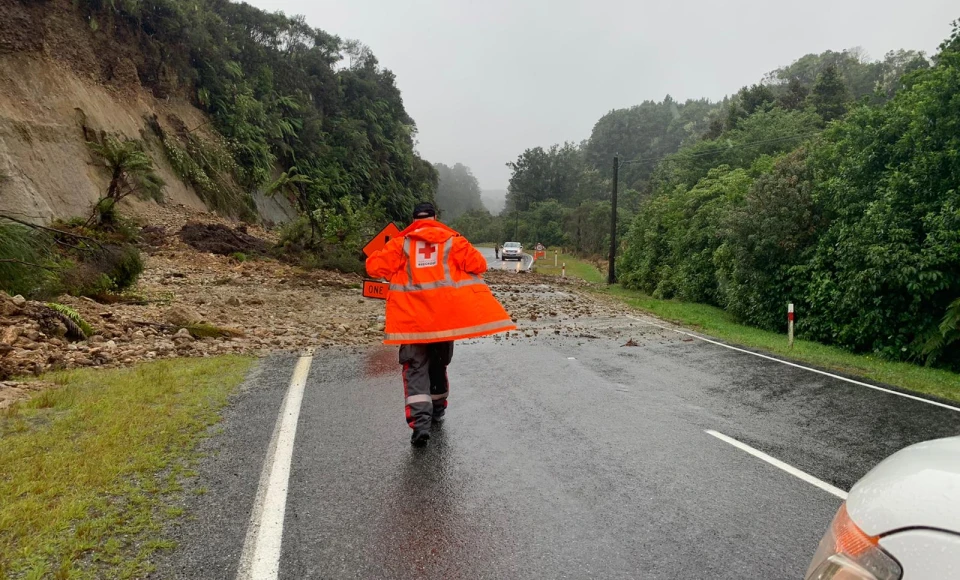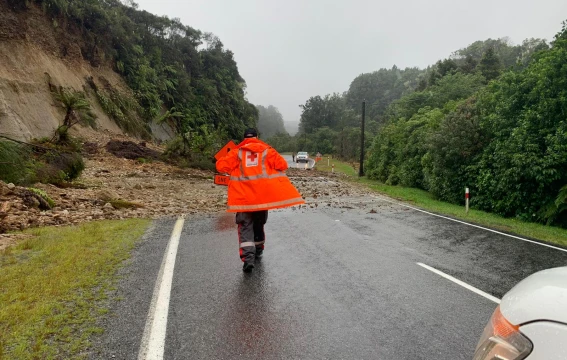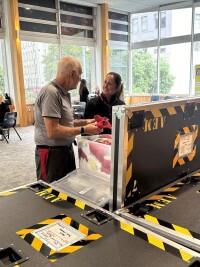Creating a culture of preparedness in Aotearoa New Zealand
17 October 2025


This week marks both the International Day of Disaster Risk Reduction and New Zealand’s national ShakeOut drill, led by the National Emergency Management Agency (NEMA) and supported by New Zealand Red Cross.
Our Director of Domestic Operations, Jackie Bubb, reflects on why creating a culture of preparedness is key to building resilient communities in Aotearoa New Zealand.
When people hear ‘emergency preparedness’, they think of bottled water, torches and maybe a grab bag tucked in the wardrobe. Those things matter, of course – but real preparedness runs far deeper. It goes far beyond a checklist. It’s a mindset – a way of living, thinking and connecting.
Turning readiness into a habit
At New Zealand Red Cross, our vision is for preparedness to become second nature in Aotearoa New Zealand – something we just do, like checking the weather or putting on a seatbelt. Because here, the risk is real. We live on a fault line. We face floods, fires, earthquakes, cyclones, volcanic eruptions, landslides and more. Emergencies aren’t rare. It’s not a matter of if, but when. The key lies in how ready we are, and how we support each other when it does happen.
Preparedness isn’t about fear. It’s about care, responsibility and community. The more we normalise it, talking about it at school gates, workplaces and marae – the more capable and confident our communities become.
Reducing the impact of disasters
Preparedness means taking small, consistent steps to reduce risks before emergencies strike. It’s about the things we do every day – strengthening our homes against hazards, securing heavy furniture, knowing our safe routes, checking in on our neighbours, connecting with family members, and learning the essentials of first aid. These are all simple ways to reduce vulnerabilities and build stronger and more resilient communities.
When we strengthen our homes, build our networks, and plan together – at home, at school, at work, and across our communities – we can make a real difference. Every action, no matter how small, helps reduce vulnerabilities and lessen the impact when disasters happen.
Effective disaster risk reduction starts with all of us taking practical steps to protect our homes, families, and communities and prepare us for future challenges.
It starts with a shift in thinking
I can appreciate preparing for something that hasn’t happened yet can feel abstract or even overwhelming. It’s easy to put it off.
But knowledge is power. Understanding the hazards in your region, what they could mean for you and your whānau and how to respond is where true resilience starts.
Sometimes we feel like we know the risks, but we haven’t really internalised them. The difference is action. When you turn knowledge into preparation – like planning where you’ll go, how you’ll communicate, or how you’ll check on neighbours – you’ve made the mental shift. You’re no longer just aware. You’re ready.
It’s not just personal – it’s collective
One of the most powerful lessons I’ve learnt responding to emergencies is the role of community – neighbours helping neighbours, strangers stepping up to support one another.
That’s why I believe community resilience is just as vital as individual preparedness. It’s about checking in with the people around you, knowing who might need extra support and being part of a wider response network.
If you’re stuck in your home without power or access, who could you call on nearby? If a storm isolates your community, how will you organise help, share information or care for each other? These are the real questions preparedness needs to answer.
When more people in a community get ready, it builds a ripple effect of resilience that can save lives and speed up recovery.
That’s why New Zealand Red Cross puts community-led emergency preparedness at the heart of our work. We support communities around the country to develop their own plans and response networks through our simple three-step Good and Ready programme, because no one knows their local needs better than the people who live there.
From “it won’t happen to me” to “we’re ready”

Domestic Operations Manager, Jackie Bubb with Disaster Welfare and Support Team volunteer, Michael Searle at an emergency management exercise.
We update our phones. We maintain our cars. Why not refresh our emergency plans?
We need a cultural shift in Aotearoa New Zealand — one where being prepared isn’t niche or dramatic, but normal. Something you chat about at the school gate, bring up at the marae, or raise at the workplace morning tea. Because the more we talk about it, the more we’ll act on it.
We need to move away from thinking of preparedness as optional, or as something for ‘other people’, and towards seeing it as just part of how we live here.
Preparedness is powerful because it puts you in the driver’s seat when things get chaotic. It gives you a sense of agency when an emergency occurs. And in many cases, it can save lives – not just yours, but those around you.
Four things you can do to get prepared
- Start where you are – Your plan doesn’t need to be perfect. Just start. Our Good and Ready programme brings together great guidance and resources you can use to get your household prepared for a disaster or emergency. It will help you to think about where you’ll go, who you’ll contact, what essentials you’ll need, and who you can support.
- It’s not one-size-fits-all – Every family is different. You might need to think about kids, pets, mobility needs, medication or language barriers. Tailor your plan accordingly.
- Comfort matters too – I often suggest including something that brings calm, like a pack of cards, a favourite toy, a note of reassurance. It’s not just about surviving, it’s about coping.
- Keep it fresh – Don’t let your plan or grab bag gather dust. Set a reminder every six months to check supplies and talk with your whānau.
Let’s make preparedness part of who we are
My challenge to all of us as individuals, families, schools, workplaces and communities is to normalise preparedness. Let’s talk about it more. Let’s build it into our routines. Let’s teach it to our kids. Because when disaster strikes, it’s too late to plan.
But if we’ve already done the mahi, if we’ve trained ourselves to think ahead, to stay calm, to act quickly, and to lean on each other, we’ll not only get through the next emergency, we’ll emerge stronger.
Preparedness isn’t fear. It’s care. It’s responsibility. It’s community and collective action. And it’s something we can all do, together.
Find out more
- Learn more about Good and Ready, which can help you and your community prepare for a disaster.
Good and Ready programme - Find out how Red Cross helps before, during and after disaster
During and after a disaster
Lead image caption: A New Zealand Red Cross volunteer assists when a landslide blocks road access
